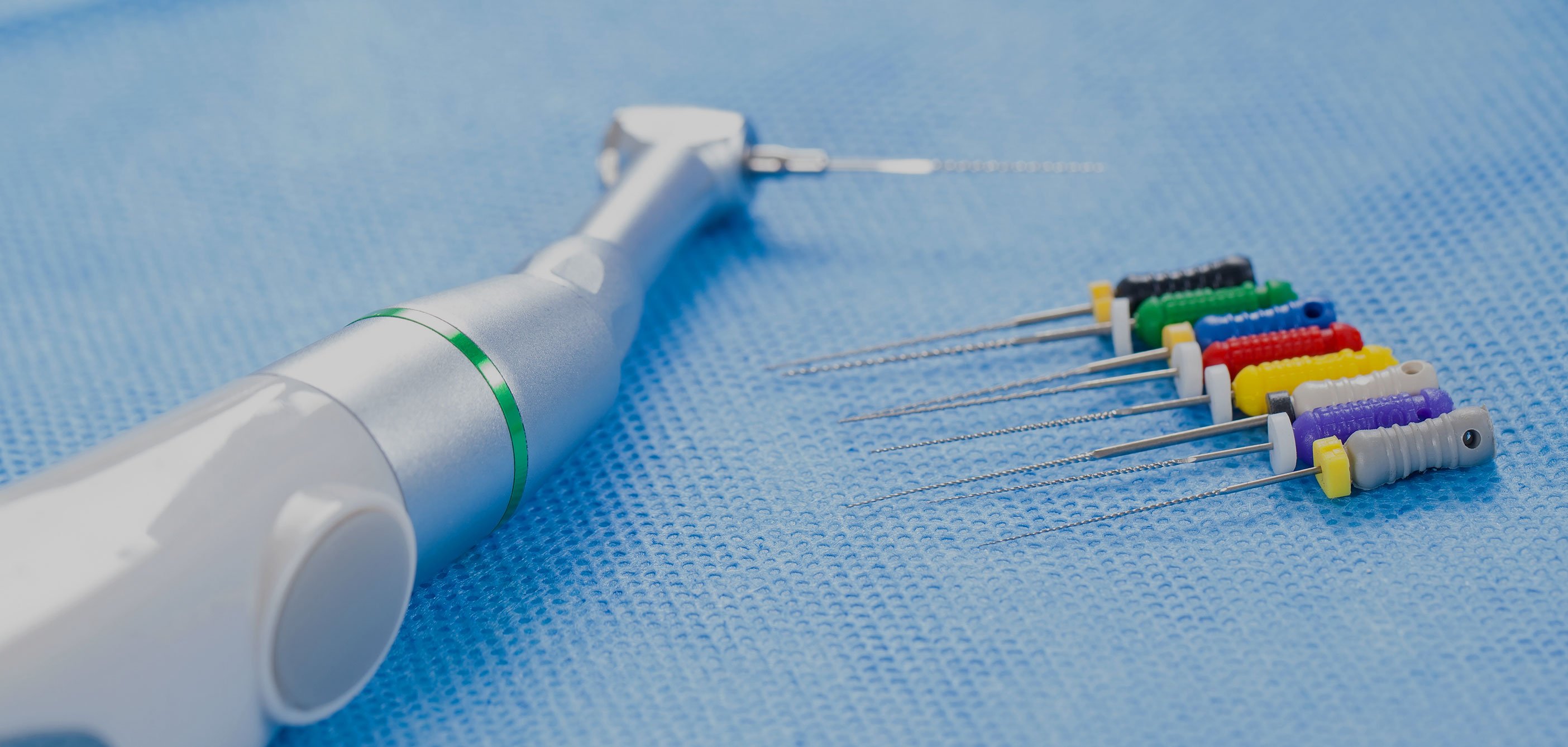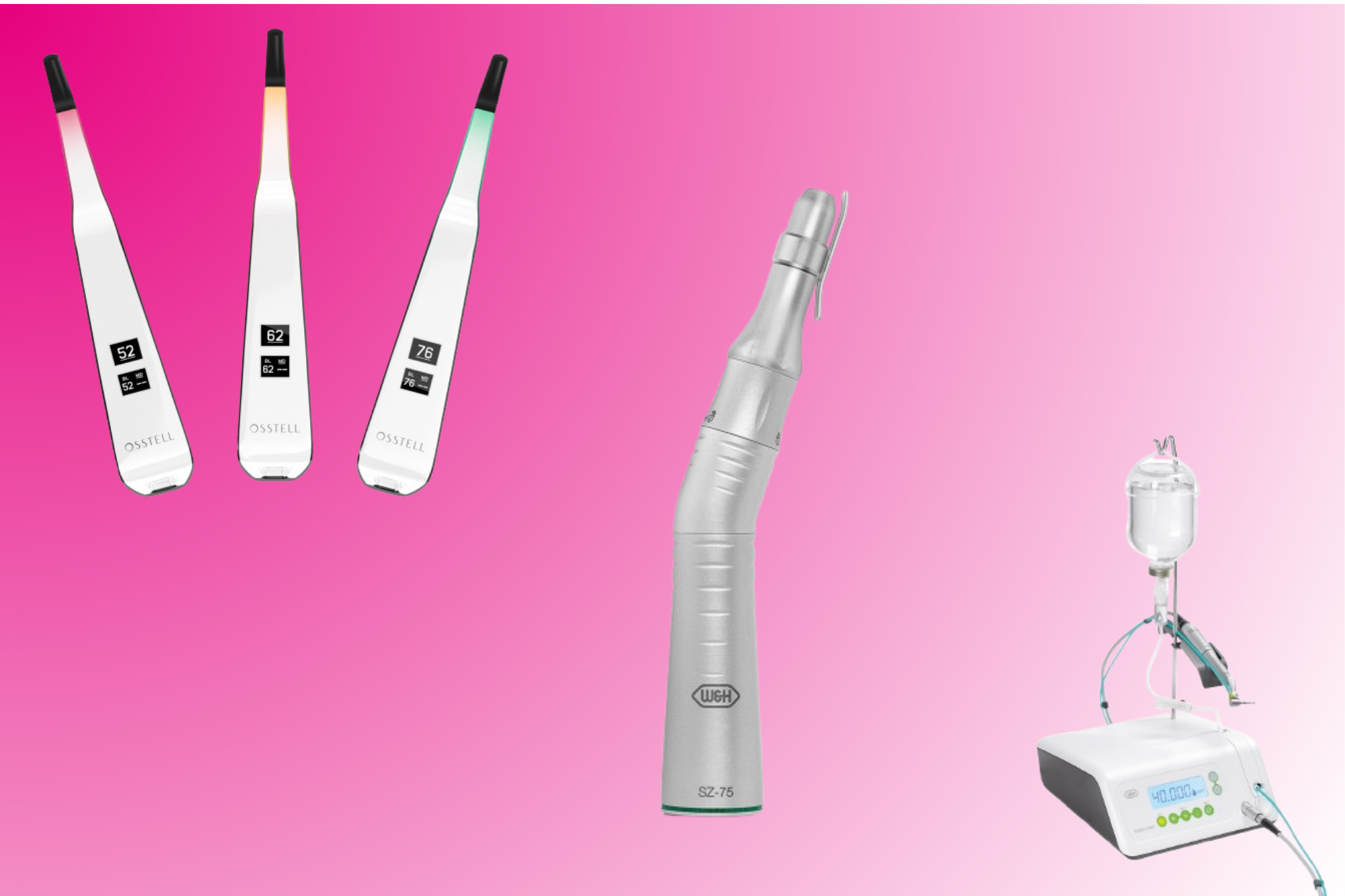Endodontics is the diagnosis and treatment of infected dental pulp and tissues surrounding the roots of a tooth. Treatment removes the pulp, cleans and sterilises the inside of the tooth and then fills or seals it.
Procedures include root canal therapy, surgery, retreatment, dental trauma and treatment of cracked teeth. Ideally, endodontic treatment should eradicate infection and sterilise the root canal with a filling technique to prevent re-infection.
Endodontics (or specifically root canal treatment) is widely considered a technically demanding protocol by the profession and (albeit incorrectly) a painful procedure by the patient.
However, there has been somewhat of a revolution in endodontic therapy in the past decade thanks to the following:
- A better understanding of the biology of the pulp-dentine complex
- An appreciation of the biological and mechanical causes and of any endodontic failure
- Improvements in the properties of the instrumentation used
- A greater understanding of measures that help to mitigate the risk of failure and torque-generated metal fatigue and/or fracture
- Anaesthesia advancements.
Together, these developments have made a positive difference to the delivery of endodontic care. So much so, that it is increasingly becoming an everyday part of general dentistry, with innovation driving results whilst helping to improve patient confidence.
The innovative technology available to dentists today ensures effectiveness, efficiency and excellence – and less invasive (and painful) therapy.
With a traditionally poor reputation for pain among patients, root canal therapy in the 21st-century is well supported by science, delivers safe methods that minimise the risk of failure, and ensures a more comfortable delivery.
What the differences between reciprocation and rotary files?
What dentists want from any procedure they offer are predictable results and patient comfort.
The instruments used in the delivery of endodontic treatment are essential components in ensuring both.
Endodontic files are used to clean and shape the root canal and the quality of those used goes partway to assuring comfort for the patient during the most intricate of procedures. Understanding how best to use these instruments as well as experience in delivering endodontic procedures also help ease of use for the practitioner.
Rotary files and reciprocating files are similarly matched in their cutting efficiency.
Rotary files are made of a nickel titanium alloy, or NiTi – a biocompatible and flexible material that has superelastic and shape-memory properties. As their name suggest, they cut in a rotary motion to shape and prepare root canals.
However, rotary files can be torque-sensitive and susceptible to cyclic fatigue – the main causes of instrument fracture. This can occur when instruments are flexed severely. An understanding of how these instruments function can help to mitigate risks.
Reciprocating files are driven by a pre-programmed motor, which turns the files in a back and forth ‘reciprocating’ motion as opposed to rotating. This means they constantly engage and disengage with the root canal. This may also include different angles of rotation as well.
The cleaning effectiveness of reciprocating files is comparable to the continuous full 360o of rotary files, the efficacy of which has been proven over the years.
Why should dentists use rotary files?
Reciprocation files, however, come at a cost. When cutting, they create debris, which is then released back into the root canal space when the file switches direction. When the debris accumulates there, it can lead to a higher risk of post-operative pain.
When combined with single file techniques, reciprocation can also put too much torque on the canal walls, which may lead to dentinal micro-cracks.
Additionally, studies comparing the rate of post-operative pain suggest a higher rate can be expected with the reciprocating motion than with the rotation motion.
Therefore, reciprocating systems require more irrigation than their rotary counterparts.
Research also shows that single file reciprocation may lead to micro cracks.
However, continuous rotation engages the cut debris. The ‘single stroke and clean motion’ (SSC) means the clinician removes the file after each engagement and wipes the file’s fluids to removes debris.
Some clinicians prefer to use traditional rotary methods that safely and efficiently tackles the root canal without causing too much stress on the dentinal walls or pushing debris down, which causes post-operative pain. Small micro cracks are an accumulative trauma and results are not necessarily seen immediately. The more micro cracks there are, the weaker the tooth, which may affect long-term restorative outcomes.
Does an electronic apex locators (EAL) work?
Any root canal procedure should terminate at the apical constriction of the root canal, where it is at its narrowest in diameter.
This is known as the working length (WL). This can be determined in numerous ways, including radiographs, tactile sensation, the paper point technique or using an electronic apex locator (EAL).
An EAL determines the position of the apical constriction by using the body as an electrical circuit. It can accurately ascertain the length of the root canal space in order to ensure successful treatment outcomes.
Using an EAL has several advantages over other methods because:
- Modern EAL is more accurate than a radiograph
- Easier to use
- Faster to use
- No exposure to radiation
- Modern colour screens ensure improved visualisation of the file progression
- It can also be used to diagnose perforations, horizontal root fracture and resorption.
Some EALs promise rates as high as 97.71%, with automatic calibration to ensure the measurements are accurate, whilst others are fully automatic without the need for calibration.
What are the strongest dental files in the market?
In essence, dental files need to be strong and flexible enough to allow them to access root canals in order to clean and shape them or compact obturation materials.
K-files are the strongest of all dental files. Made of quality stainless steel, they are also flexible and ideally suited to bypass obstructions with ease.
They are durable and stable and designed for searching the root canal, cleaning and shaping canal walls.



